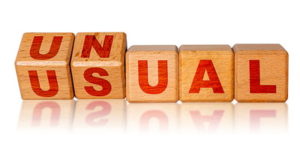 When people think of casino games, it’s common for them to think about slots, Texas Hold’em poker, roulette and blackjack. After all, these are quite frequently found within casinos, and remain popular with players.
When people think of casino games, it’s common for them to think about slots, Texas Hold’em poker, roulette and blackjack. After all, these are quite frequently found within casinos, and remain popular with players.
Yet, there are some games that can’t be considered quite as common as these, and you may not have heard of them before. Perhaps you’d like to try one or more of them out after learning about how entertaining they are. Here they are – the casino games that you may not have heard of before.
Pai Gow Poker
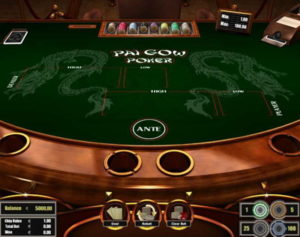 To understand a bit more about this game, you need to look at the game of pai gow itself, which is a Chinese gambling game that is played with 32 Chinese dominoes. This game can be found in many major casinos in China and Macau, as well as various land-based locations in Canada, the United States and Australia.
To understand a bit more about this game, you need to look at the game of pai gow itself, which is a Chinese gambling game that is played with 32 Chinese dominoes. This game can be found in many major casinos in China and Macau, as well as various land-based locations in Canada, the United States and Australia.
The poker version utilises cards instead of dominoes, and it was created by a US card club owner in 1985. A standard 52-card deck, plus a single joker card, is used when playing pai gow poker. It all plays out on a table set up for six players as well as the dealer, and essentially, each player needs to try and defeat the dealer. So, how does this happen?
The objective behind pai gow poker is to create a five-card hand and a two-card poker hand from seven cards, both of which must beat out the dealer’s two card hands. The five-card hand’s rank must also exceed that of the two-card hand. Naturally, the only options for the two-card hand are one pair and high cards. The five-card hands utilise standard poker hand rankings, while the joker operates as a bug. This means that it can be used to complete a straight or a flush in a five-card hand. Otherwise, it acts as an ace.
The Idea Behind Pai Gow Poker
The idea for this game came to the owner of the Bell Card Club, Sam Torosian. He was informed about a Chinese card game named Pusoy by one of his Filipino customers. Once he invented this – after deciding that a simplified two-hand version of Pusoy with only seven cards would flow faster and smoother – it quickly became popular.
By the late 80s, pai gow poker was being played on the Vegas strip. However, Torosian made the grave error of not patenting the game, thanks to bogus information given to him by both an attorney and a poker author.
Sic Bo
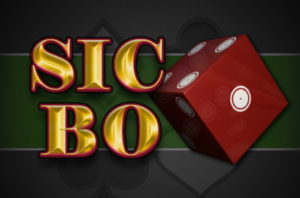 Keeping in line with the Chinese games, sic bo is another to come from the large Asian country. This one is usually played with three dice, with the title of the game translating literally to “precious dice”. Sic bo is highly popular throughout Asia and can be found in just about all casinos based in Macau. Chinese immigrants brought it to the United States in the early 20th century, and it spread throughout the casinos there at the same time.
Keeping in line with the Chinese games, sic bo is another to come from the large Asian country. This one is usually played with three dice, with the title of the game translating literally to “precious dice”. Sic bo is highly popular throughout Asia and can be found in just about all casinos based in Macau. Chinese immigrants brought it to the United States in the early 20th century, and it spread throughout the casinos there at the same time.
Fans of craps may find sic bo to be an entertaining alternative, although in this game, the dealer rolls the dice rather than the player. Three dice are placed inside a chest, this is shaken and when finished, the chest is placed down before being opened. The winning combination is then revealed.
Players must place bets on sic bo prior to the roll of the dice, and you will usually always have the choice of eight different wagers. Some casinos also provide unique side bets to their players, too. These bets are:
- Big: Wins if the dealer rolls between 11 and 17, but if the dealer rolls a triple, the bet loses.
- Small: The exact opposite of the Big bet, for rolls that equate to between 4 and 10.
- Odd: As the name suggests, you’re betting on the dealer rolling an odd number.
- Even: A wager that the dealer rolls an even total number.
- Totals: This is a bet that you can place on the exact total of the dice, with 14 different possibilities able to be chosen from.
- Any Triple: Used if you believe the dealer will roll all 1s, 2s, 3s, 4s, 5s or 6s.
- Specific Triple: As it suggests, you need to pick a specific triple for this bet.
- Specific Double: You need to pick a number from one to six and if you get a double of that number, you win a pay-out of 10 to 1 in most cases.
Variants of Sic Bo
Sic bo is responsible for the creation of a couple of different “spin-offs”, with the first of these being the Grand Hazard game. This is also played with three dice and remains popular in England. The dice are either thrown with a cup or rolled down a chute that contains a series of inclined planes known as the hazard chute. Three-of-a-kind are called “raffles” and pay out 18:1.
Chuck-a-luck is a variant that occurs in the US, and this also stems from the Grand Hazard game. This variant usually only allows for the single-number wagers, though. While being common in Nevada at one time, chuck-a-luck has since been replaced in most places by sic bo.
Casino War
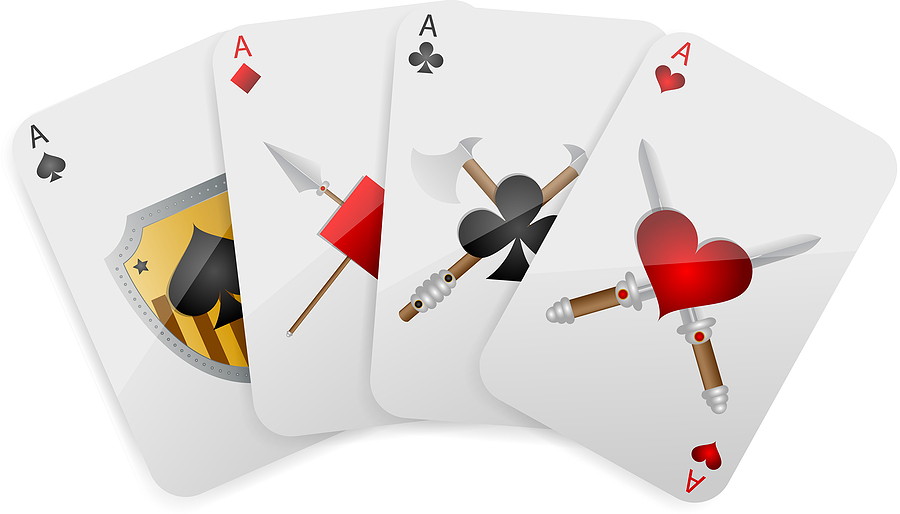
Believe it or not, this isn’t something that takes place between two rival casinos. Instead, it’s based on the simple card game that goes by the name of War. This is typically played by two players, and is frequently played by children. From this, you can probably guess that Casino War is one of the easiest to understand casino games. In playing it, you stand the chance of beating the dealer more than half the time.
Casino War is usually played with six standard 52-card decks, and these are ranked in the same was as poker cards, with aces being high. One card is dealt to both the player and the dealer, and if the player’s card is higher, the bet is won. If the dealer’s card is higher, the player’s bet is lost. A tie occurs when both the dealer and the player have cards of the same rank.
In a tie outcome, the player can either surrender and lose half their bet or “go to war”, which means their stake must be doubled. This then sees the dealer discard three cards before dealing each of them an additional one card. Play resumes in the same way as before – if the player’s card is higher, he wins. A side bet is also usually offered, allowing you to bet on a tie outcome as well.
History of Casino War
The Casino War game was actually developed by Bet Technology, which is a small company basing itself out of Carson City, Nevada. The patent on the game was actually filed in 1993, and by the following year, the game saw itself being offered at five casinos in Northern Nevada. Harrah’s Tahoe was the very first to do so.
It was in 2004 that Shuffle Master went through a takeover of Bet Technology and its assets. This included the trademark of Casino War, which remains under its brand today.
Texas Shootout
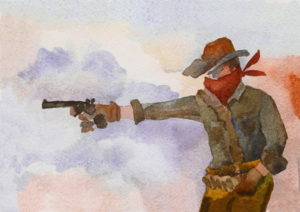 Gun control may be quite the issue in the United States, but that’s not what Texas Shootout is about. The game that goes by this name is actually based on the game of Texas Hold’em poker, and it was developed by Galaxy Gaming. Texas Shootout is still accessible today at casinos in Las Vegas, as well as a number of smaller casino establishments based around the United States.
Gun control may be quite the issue in the United States, but that’s not what Texas Shootout is about. The game that goes by this name is actually based on the game of Texas Hold’em poker, and it was developed by Galaxy Gaming. Texas Shootout is still accessible today at casinos in Las Vegas, as well as a number of smaller casino establishments based around the United States.
If you do choose to play this, you’ll see that six decks of 52 cards are in use. You place bets and have the possibility of placing side bets as well. After this, you’ll be dealt four cards, and the dealer deals himself four cards, too. He chooses the best two from that, and then it’s up to you whether you use all four of your cards to make two separate hands or not. If you do this, then you must also double your stake.
Five community cards are then dealt face-up and both you and the dealer must make the best five-card poker hand that you possibly can by combining your two cards with three of those dealt. Should you make a better hand than the dealer, you win even money on your stake. A tie outcome or a worse hand than the dealer sees you lose your stake.
What Is the Side Bet?
The side bet in Texas Shootout bases itself solely on your hand. If it is a straight or anything better than this, you receive a pay-out for the side bet. Stronger hands are paid multiples of the side bet, so a royal flush for example, may receive a reward of 200x to 500x the original side bet placed. This depends upon the pay-out structure set in place by the casino itself.
The best possibility in this circumstance is to obtain a five-of-a-kind hand in the same suit, with the pay-out often being anywhere between 1,000 and 5,000x your side bet. To add to this, should you place a minimum side bet of $5, you may be entitled to something known as an “envy bonus”. Again, this depends upon the casino, but should any other player get five-of-a-kind or better, the player receives a small amount of a reward too – usually between $10 and $1,000.
Big 6 Wheel
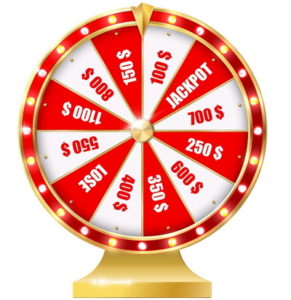 Just in case you weren’t sure, the Big 6 Wheel game utilises a wheel in its gameplay. It is available to play in licensed casinos throughout the United Kingdom, and this has been the case since 2002. Some US casinos are also aware of, and have featured, the Big 6 Wheel in their establishments before, too.
Just in case you weren’t sure, the Big 6 Wheel game utilises a wheel in its gameplay. It is available to play in licensed casinos throughout the United Kingdom, and this has been the case since 2002. Some US casinos are also aware of, and have featured, the Big 6 Wheel in their establishments before, too.
The wheel itself is divided into equal segments, which are separated by spokes or pins. Each segment is associated with a number, and it is up to the dealer to spin this wheel. The winning segment is displayed by a pointer that is mounted at the very top of the wheel. As it happens, there are a number of variants of the Big 6 Wheel game, and different countries will have differing rules surrounding the size of the wheel, the symbols displayed on it and so on.
Money Wheel
The money wheel variant of the game is the one that is most popular in the United States of America. Symbols on the wheel include $1, $2, $5, $10 and $20, as well as two special symbols represented by the joker and the casino’s logo.
Those two specials provide the larger pay-outs of the wheel, and these are dictated by local gaming regulations or at the casino’s discretion. Bets are essentially placed on which portion of the wheel will land in the winning position, with $1 paying out 1:1, $2 paying out 2:1, $5 offering 5:1 rewards and so on.
Dice Wheel
This variation of the game sees dice depicted on the wheel, with a total of 216 different combinations from three dice being possible. Sometimes, the same combination will appear in more than one segment of the wheel. Players essentially place wagers on the number one through to six and if the number appears on one of the dice in the winning segment, a 1:1 pay-out is obtained. Two of the dice pay 2:1 and three of the dice pay 3:1.
This has some connection to the Sic Bo and Chuck-a-Luck games mentioned earlier on, which are also played with three dice. The difference is that the house edge is generally greater with Big 6 Wheel games, as opposed to Chuck-a-Luck.
Dice Wheel games are often seen at carnivals more so than casinos, although it remains in operation in a few assorted establishments.
UK, Australia and New Zealand Have Their Own Wheels
Legal versions of the game exist in the United Kingdom, Australia and New Zealand, which involves a wheel of at least 1.5 metres in diameter being in use. Each of the 52 segments on the wheel are marked with one of seven different symbols, running from A through to G. There is just a single A and a single B symbol on the wheel, while two Cs exist. Four Ds, eight Es, 12 Fs and 24 Gs make up the remaining symbols.
Therefore, the likelihood in playing this version of the Big 6 Wheel is that it will land on a G segment, and this pays out 1:1 rewards. For the A and B segments, you’re frequently offered 50:1 rewards in the UK or 47:1 in Australia and New Zealand.
